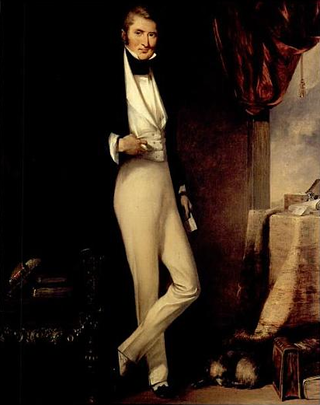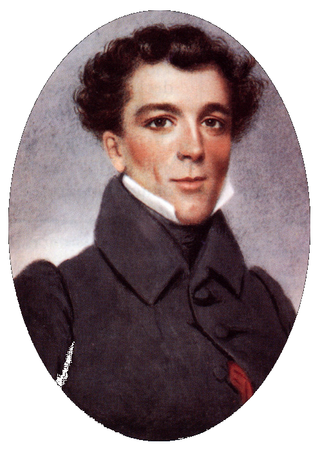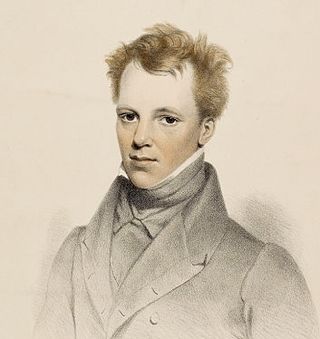
William Jardine was a Scottish physician, opium merchant and trader who co-founded the Hong Kong based conglomerate Jardine, Matheson & Co. Following his return to England from the Far East, between 1841 and 1843, he was Member of Parliament for Ashburton representing the Whig party.

Robert Bennet Forbes, was an American sea captain, China merchant and ship owner. He was active in ship construction, maritime safety, the opium trade, and charitable activities, including food aid to Ireland, which became known as America's first major disaster relief effort.

Dent & Co. or Dent's, was one of the wealthiest British merchant firms, or Hongs, active in China during the 19th century. A direct rival to Jardine, Matheson & Co, together with Russell & Co., these three companies are recognised as the original Canton Hongs active in early Colonial Hong Kong.
HMS Curlew (1812) was a Royal Navy Cruizer class brig-sloop built by (William) Good & Co., at Bridport and launched in 1812. She served with the Navy for only 10 years. During the War of 1812 she sailed from Halifax and captured several American privateers. Her greatest moment was her role in the 1819 British occupation of Ras Al Khaimah, leading to the signature of the General Maritime Treaty of 1820, which established the Trucial States, today the United Arab Emirates. Curlew was sold in 1822 in Bombay. She then had a 13 or so year career as an opium runner for James Matheson, one of the founders of the firm Jardine Matheson.
The schooner Anglona was the first American opium clipper. She sailed in the Chinese coastal trade in the 1840s, and had a famous race with the schooner Ariel around Lintin Island.

Lord of the Isles was the first iron-hulled tea clipper, built in Greenock in 1853. She served in the tea trade until 1862, and also made voyages to Australia. She is known for a record passage between Greenock and Shanghai, and for her close finish in the 1856 Tea Race from China to England, docking in London just ten minutes before Maury. This race was the basis for the plot of a 1927 movie by Cecil B. DeMille The Yankee Clipper.

The Indo-China Steam Navigation Company, Limited (ICSNC), was established in 1873 as a subsidiary of Hong Kong based Jardine, Matheson & Co., one of the largest trading companies in the Far East at that time.

Jardine, Matheson & Co., later Jardine, Matheson & Co., Ltd., forerunner of today's Jardine Matheson Holdings, was a Far Eastern company founded in 1832 by Scotsmen William Jardine and James Matheson as senior partners. Trafficking opium in Asia, while also trading cotton, tea, silk and a variety of other goods, from its early beginnings in Canton, in 1844 the firm established its head office in the new British colony of Hong Kong then proceeded to expand all along the China Coast.

Stornoway was a British tea clipper built by Alexander Hall and Sons in Aberdeen, Scotland in 1850. She was a further development by Hall on the clippers built in Aberdeen in 1848, being larger and more obviously suited to deep sea service. She was ordered by Jardine Matheson specifically for the tea trade. In the late 1840s, tea was available earlier in the season in China, so the first ships to load had to beat to windward against the north-east monsoon to get across the China Sea. The details of the hull shape designed by Hall had this requirement in mind.

Robert Thom was an English nineteenth century Chinese language translator and diplomat based in Canton who worked for the trading house Jardine, Matheson & Co. and was seconded to the British armed forces during the First Opium War (1839 – 1842). For his literary works Thom used Sloth as a nom de plume.

Jardine Matheson Holdings Limited is a Hong Kong-based, Bermuda-domiciled British multinational conglomerate. It has a primary listing on the London Stock Exchange and secondary listings on the Singapore Exchange and Bermuda Stock Exchange. The majority of its business interests are in Asia, and its subsidiaries include Jardine Pacific, Jardine Motors, Hongkong Land, Jardine Strategic Holdings, DFI Retail Group, Mandarin Oriental Hotel Group, Jardine Cycle & Carriage and Astra International. It set up the Jardine Scholarship in 1982 and Mindset, a mental health-focused charity, in 2002.

Red Rover was the name of two clipper ships.
Apcar and Company was a firm founded in 1819 in India that engaged in shipping, import and export. The most profitable trade was in opium, shipped from India to Hong Kong and the Pearl River. The Apcar Line also carried Indian and Chinese laborers for work in Malaya and Singapore. The line was sold to the British India Steam Navigation Company in 1912.
Jardine, Skinner and Company was a trading company based in Calcutta, India. It was founded in 1825, initially dealing in textiles. Later it branched out into opium, tea, timber and petroleum. The company was closely associated with Matheson & Company of London and Jardine Matheson & Co. of Hong Kong.
Nimrod was launched late in 1821 at Calcutta. One report has her being sold in 1825; she did change her homeport to the United Kingdom. In 1832 her ownership and homeport changed to Sydney, Australia.
Sarah was launched at Rotherhithe in 1819. She made three trips to China and went to Australia four times. In 1829 she transported convicts to New South Wales and in 1837 she delivered convicts to Van Diemen's Land. She was condemned c.1843.
Hercules was built at Calcutta in 1814. She acquired British registry and traded between Britain and India under a license from the British East India Company (EIC), before returning to Calcutta registry. She then traded opium between India and China, and became an opium receiving ship for Jardine Matheson. In 1839 she was one of the vessels that surrendered her store of opium to be burned at the behest of Chinese officials at Canton. This incident was one of the proximate causes of the First Opium War (1839–1842). Her owners apparently sold her to American owners in 1839.
Ardaseer was an opium clipper built at Bombay Dockyard in 1836. A fire on 4 April 1851 destroyed her as she was on a voyage from China to Calcutta via Singapore.

Vansittart was launched at Calcutta in 1813 for the India to China trade. However, she then became an East Indiaman for the British East India Company (EIC). She made 11 voyages for the EIC. Her owners then sold her and her new owners continued to sail her to China from London, the EIC's monopoly having ended. She carried opium from India to Canton. In 1839 she assumed a Danish name and registry as a short-lived subterfuge to evade Chinese governent restrictions on the opium trade. By September 1840 she reverted to her original name and British registry. A fire of questionable origin destroyed her at Bombay in 1842.












